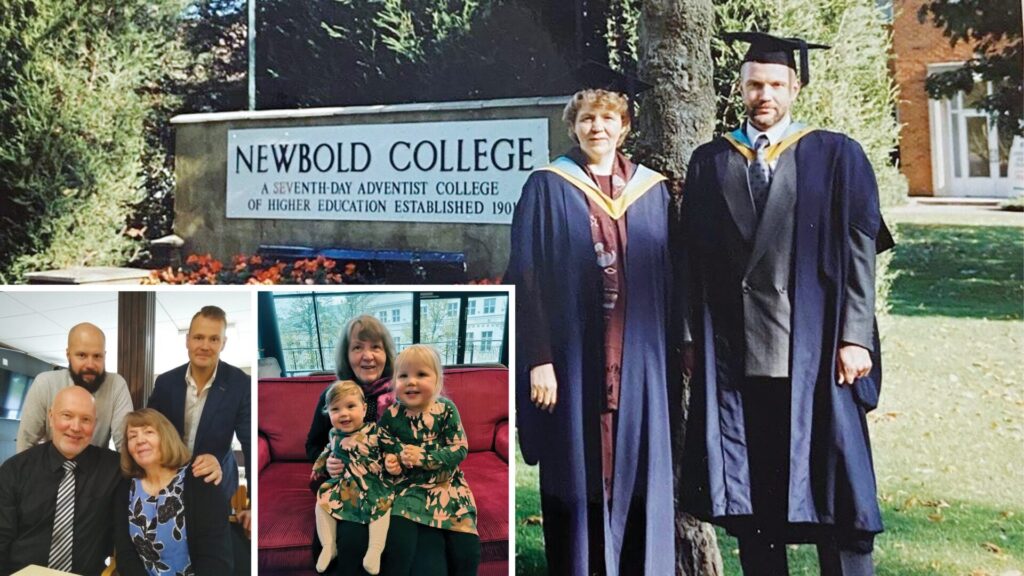His name was Mark—a young Austrian in his early-twenties. I met him as I was leaving the Hare Krishna temple in New Delhi, India. I had been travelling India to find out what attracts Western youth to Eastern mysticism. I boarded a bus back to the city centre and Mark, who had also been at the temple, came on board and sat next to me. He fingered a string of Buddhist prayer beads in his left hand, while he flipped through some flash cards with Hindu sayings, in his right.
In our conversation he asked me what I did. “I’m a Christian minister,” I said. His eyes lit up and his voice brightened, as he said, “I read the Bible and loved Jesus.” I was intrigued, to say the least. “How come you’re into Eastern meditation,” I asked. “Is that compatible with the teachings of Jesus?” His reply threw me. He said, “I started to go to church and lost Jesus.”
He lost Jesus in church! How could that be? If Mark had gone to an Adventist church would his new-found love for Jesus have been nurtured or would he have become a statistic of the more than 42 per cent who have left the Adventist Church in the past 50 years or more?
Jeff Parker, Adventist youth director for Australia, revealed at the Youth & Young Adult Engagement Summit (May 25-27, 2018), that “around 62 per cent of young people who attend a church in Australia leave before they’re 30.”1
Adventist Church researcher Monte Sahlin said survey findings show that the cause of members leaving the Adventist Church has less to do with doctrinal disagreements “than with problems people experience in their personal lives”.2 Statistician David Trim also said the “creeping secularisation” of our world is a factor.3
Is there something missing?
But this begs the question: If knowing our doctrines does not sustain members during personal crises or fortify them against secularism, is there something missing from our teaching?
US pastor Lee Venden, in conducting revival programs among Adventists in North America, found for members who attend church:
- Less than 25 per cent spend any personal time in daily Bible study and prayer.
- The majority lack assurance of salvation and openly admit that they don’t have a daily walk with Christ.
- While those joining the Church see our doctrines as biblical, they don’t see Jesus as the centre of each of them. Too many come to church but don’t come to Jesus.4
Many members, obviously, are struggling spiritually. We’ve taught them our doctrines, but somehow haven’t introduced them to Jesus.
One study of Adventist millennials (born between 1980 and 2000) who still attend church revealed that they have a more negative view of the Adventist Church, than US millennials, in general, have about their churches.5 That being the case, we can see why the Summit on Nurture and Retention recommended “that building loving and Christ-like relationships within the local church must be an urgent necessity”6 (emphases added throughout, unless otherwise stated).
Another survey of 18 to 35-year-olds who have stayed with the Church, revealed that less than 1 in 4 engage in Bible study daily and nearly three quarters (73.5%) had no assurance of salvation.7 If this is true of a majority of young adults who remain in the Church, what could this indicate about those who have left the Church?
A secular society
What Dr Trim stated about the “creeping secularisation” of our society and its effects, particularly via the entertainment media, is true. Today, in the West, we live in a post-Christian society, characterised by a lack of meaning and purpose. Truth is relative. In deciding what’s right or wrong, the individual becomes his or her own subjective authority. People live comfortably with contradictions; profession and practice don’t have to match.
Research organisation Barna Group’s 2018 Gen Z report agrees: “Moral relativism is taking deeper root in America. One-quarter of Gen Z [born between 1999 and 2015] strongly agrees that what is morally right and wrong changes over time based on society . . . each individual is his or her own moral arbiter. Only 34 per cent of Gen Z agree that ‘lying is morally wrong’.”8
To illustrate, “post-truth” was named the 2016 international word of the year by Oxford Dictionaries, after the contentious “Brexit” referendum and a divisive US presidential election. It denotes an appeal to emotion and personal beliefs in shaping public opinion, more than to objective facts. The prefix “post” has usually meant “after”, as in “post-war”. In post-truth it means truth “has become unimportant or irrelevant”. Oxford Dictionaries president Casper Grathwohl considers post-truth could become “one of the defining words of our time”.9
This is the era of “fake news”, “alternative facts”, “conflicting narratives” and where “truth isn’t truth”.
Fake news, defined as “false, often sensational, information disseminated under the guise of news reporting”, was named the Collins Dictionary Word of the Year in 2017.10
In their “Trends Shaping a Post-Truth Era” (January 9, 2018), Barna Group found that “truth is increasingly regarded as something felt, rather than something known”.11 Since the 1960s, Western society has become progressively more subjective.
On the effects of this “creeping secularisation”, Dr Trim concluded that “the fabric of most Adventist local churches is not sufficient to stem this tide”.12 Can people have a life-changing experience that can fortify them against secularism and personal crises, without coming to Jesus?
Not just in the west
It’s not just in the West where members have joined the Church but not “come to Jesus”. Rwanda was a nation where 95 per cent of the population claimed to be Christian, including almost 300,000 Adventists, about 10 per cent of the population. Church leaders described Rwanda as the most Adventist country in the world. That is, until 1994, when genocide took place, as the Hutu majority slaughtered more than 800,000 minority Tutsis. The dead included more than 12,000 Adventists.13
The terrible truth is that many Adventist church members and pastors were involved in the genocide and, it’s reported, they maintained their Adventism by scrupulously resting from killing on Sabbath.14 [pullquote]
What Robert Folkenberg, the then General Conference president, saw when he visited Rwanda moved him more than anything he had ever seen. “What happened in Rwanda,” he declared, “is largely the result of unconverted people who carried the name of Christ” (original emphasis).
After spending time on his knees, Folkenberg came to one conclusion: “the gospel did not fail. The cross of Christ did not fail, the Holy Spirit did not fail. . . . We as pastors failed. . . . As religious leaders we let down God, Christ and the people of Rwanda. . . . We must confess our sins before God.
“What’s required,” declared Folkenberg, is for “spiritual leaders to call for conversion and transformation”.15 Have we taken the implications of what happened in Rwanda and Folkenberg’s words in response, seriously?
People can be quite religious and be sincere about it, without being Christians.
What’s the answer?
Baptism does not equate to conversion. Should we have more emphasis on conversion to Jesus, rather than on baptism? Could it be that we spend more time talking about the Beast, creating righteousness by fear, rather than talking about the Lamb, who credits us with righteousness by faith?
Carlyle B Haynes was an Adventist evangelist, bringing people into the Church, when the realisation came to him that he “had been preaching for 15 years and yet was an unconverted man”.
“I had neglected the first simple childlike step of coming to Jesus Christ for myself and, by faith in Him, receiving pardon for my own sins,” he writes, “God brought me back, after 15 years of preaching this message, to the foot of the cross.”
When we turn away from our “own works and look alone to Christ for salvation,” Haynes shared, “God declares that [person] just. This declaration of God is grounded on the finished work of our Lord.”16
This is the good news of the gospel.
“For even the Son of Man did not come to be served but to serve, and to give His life a ransom for many,” Mark 10:45 (NKJV).
Errol Webster is a retired pastor living in Bathurst, New South Wales. He is the author of the Try Jesus lesson series.






